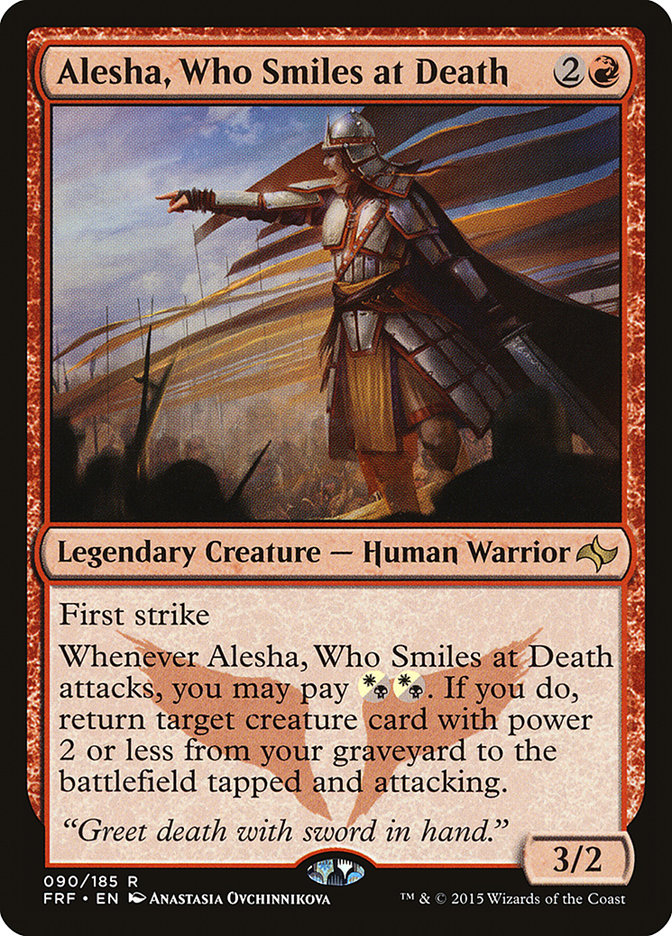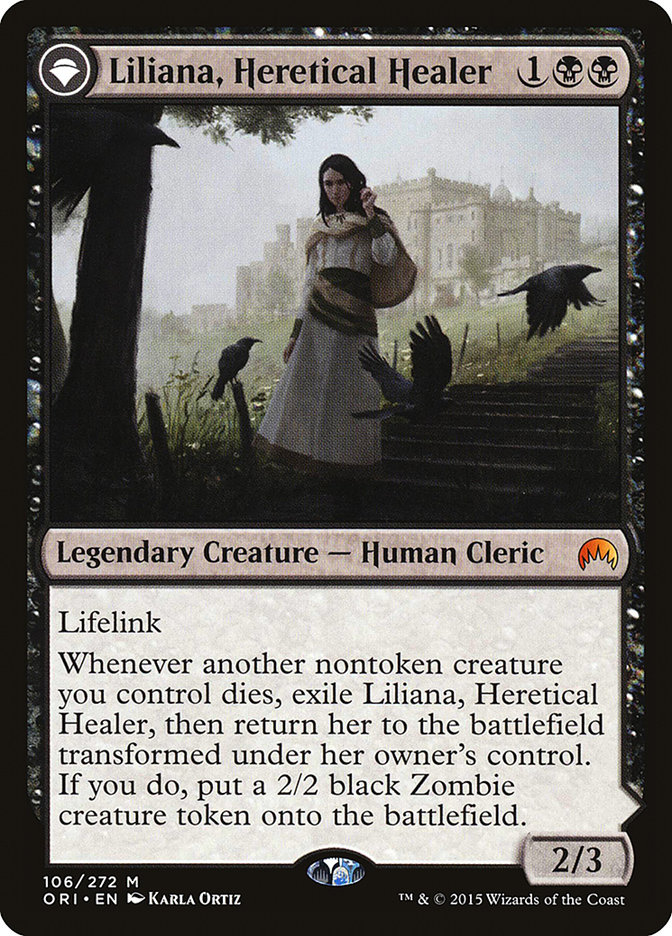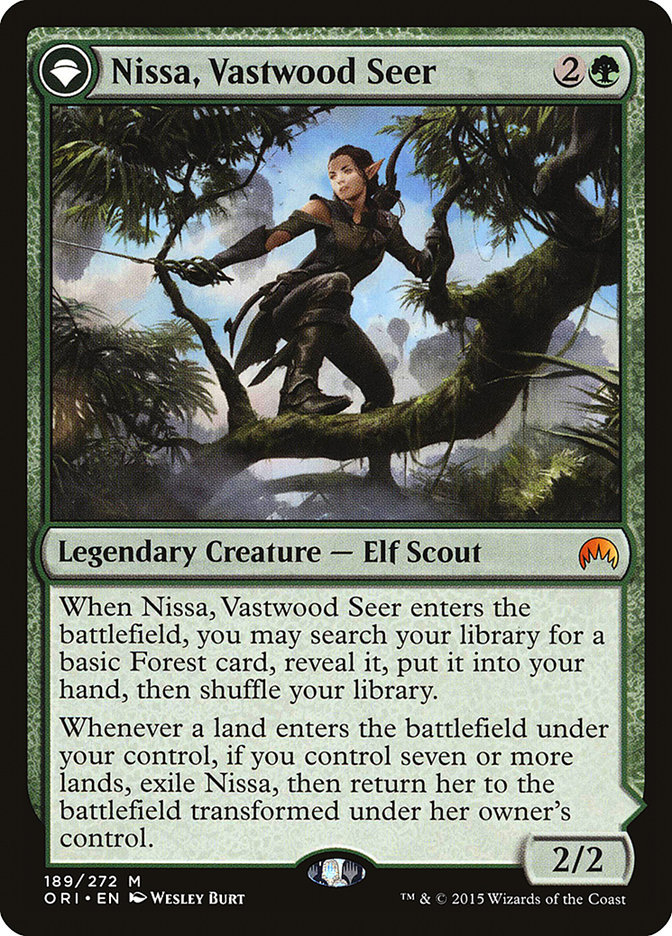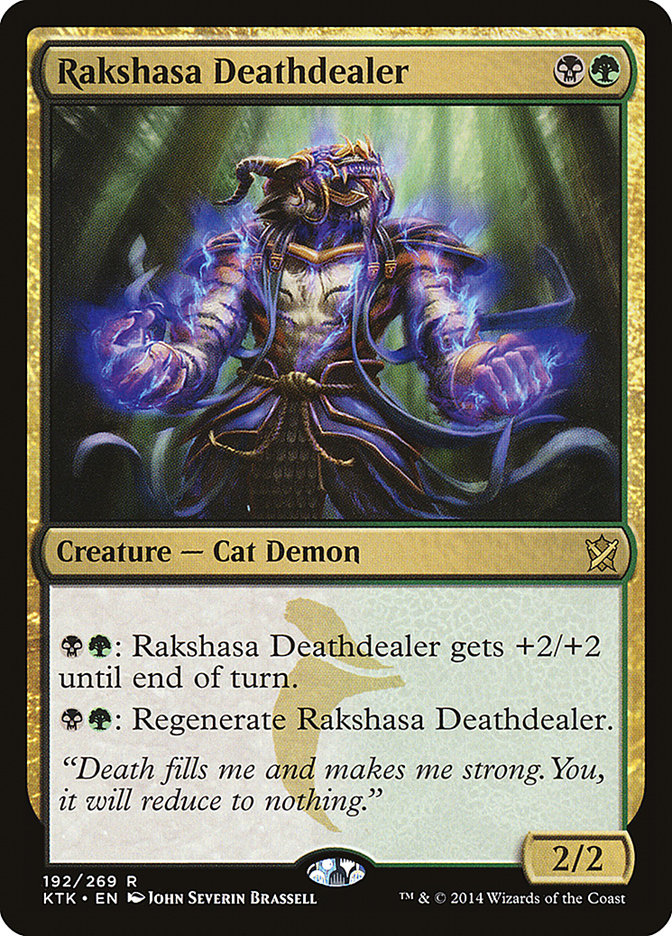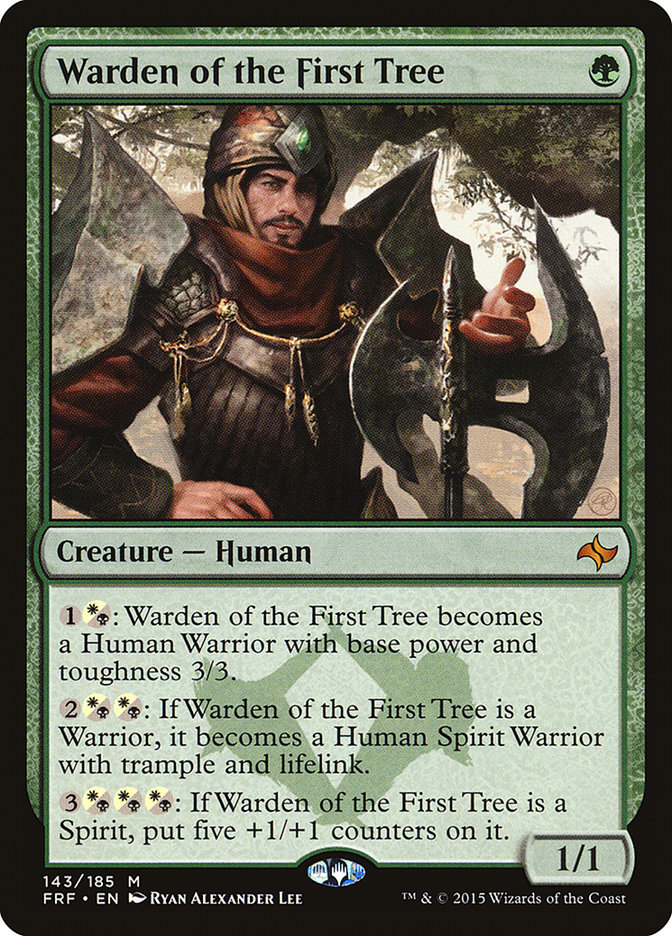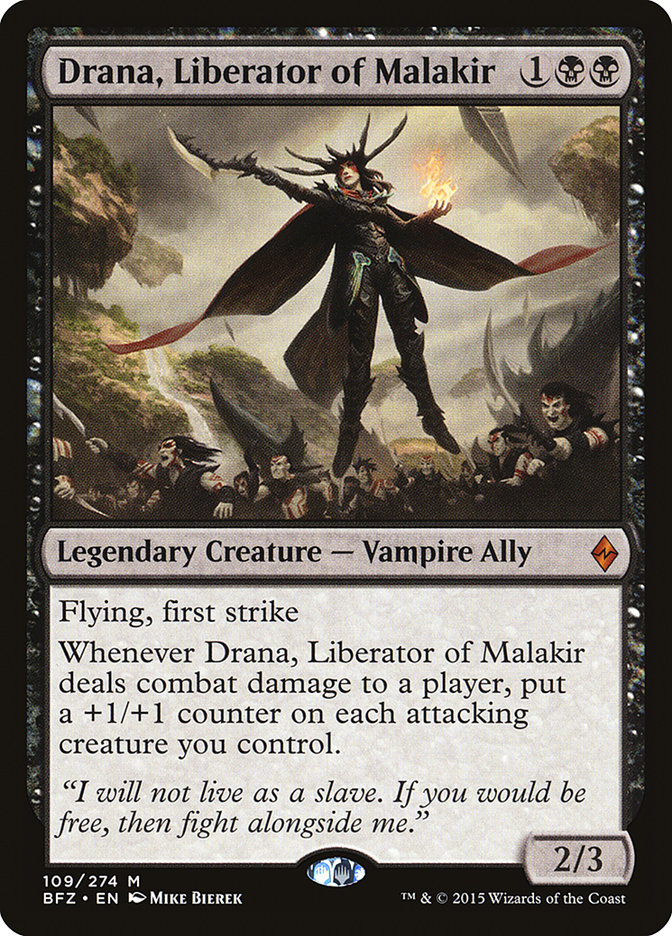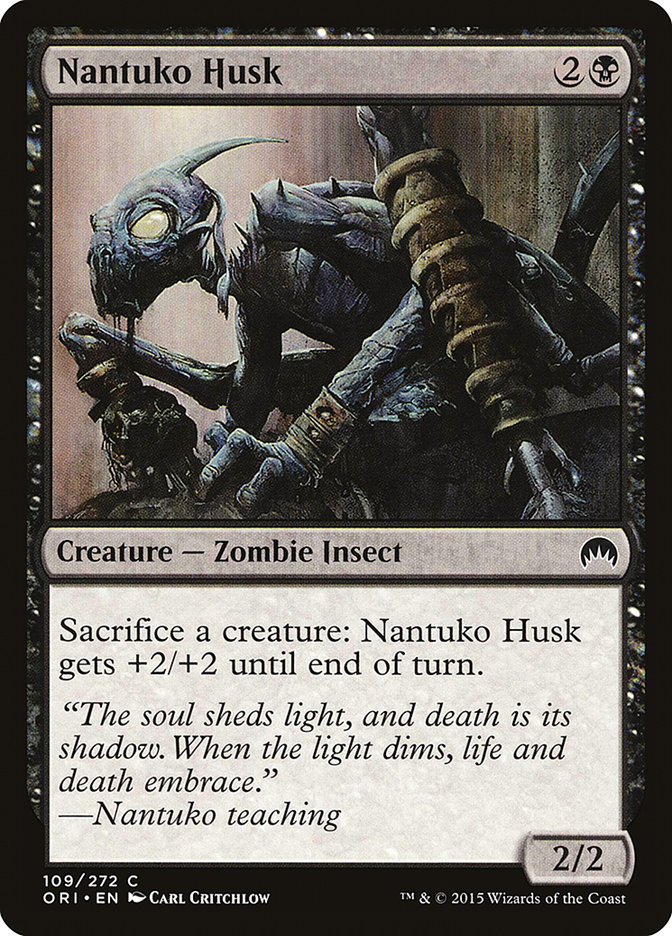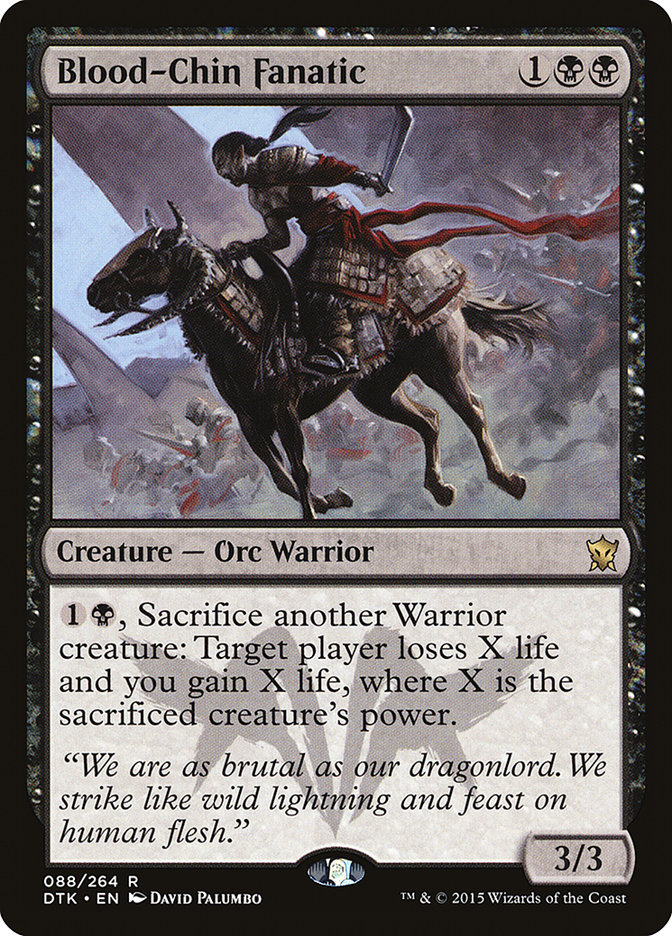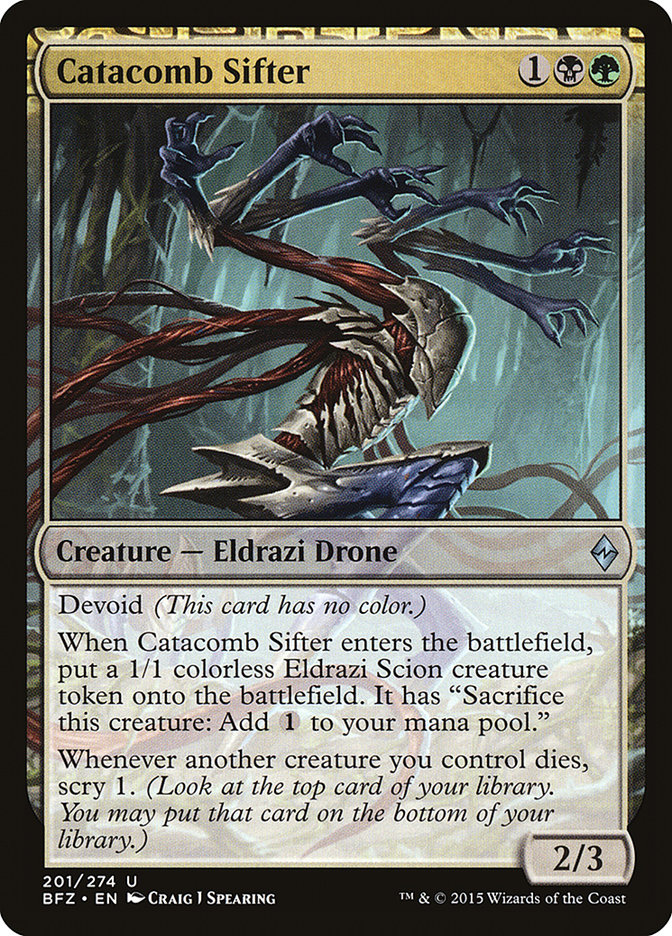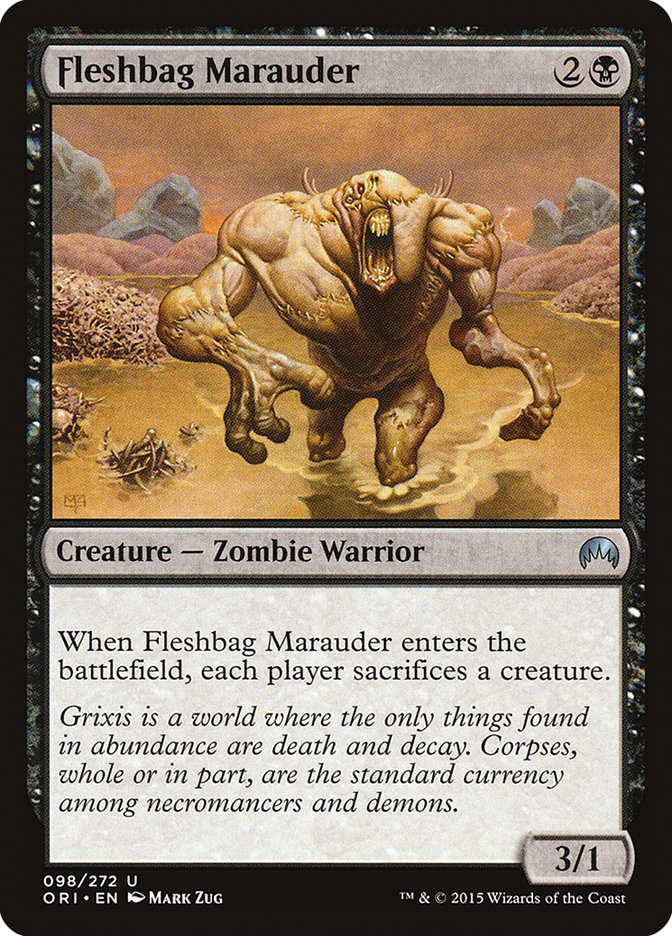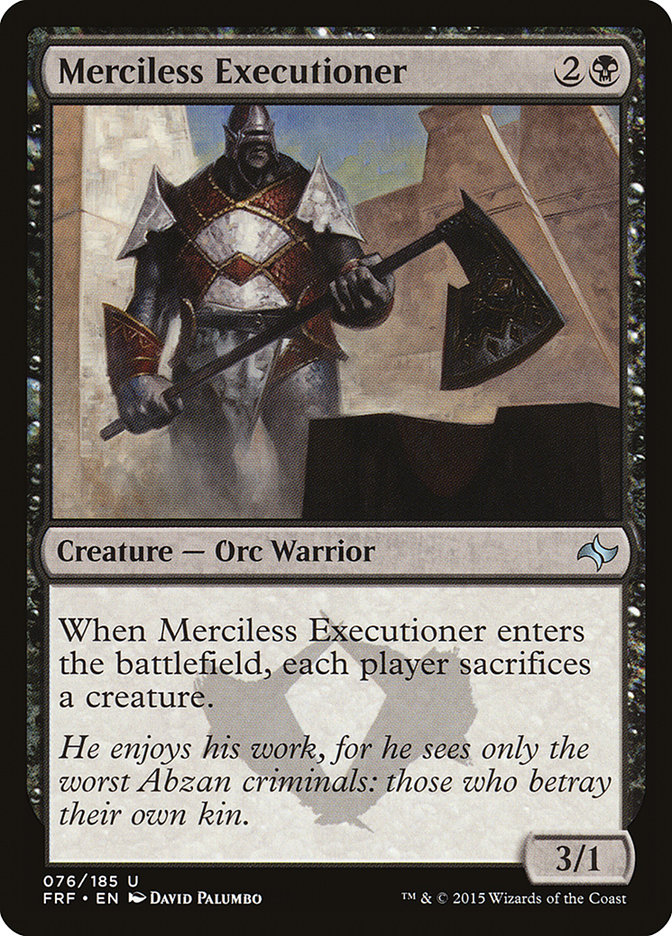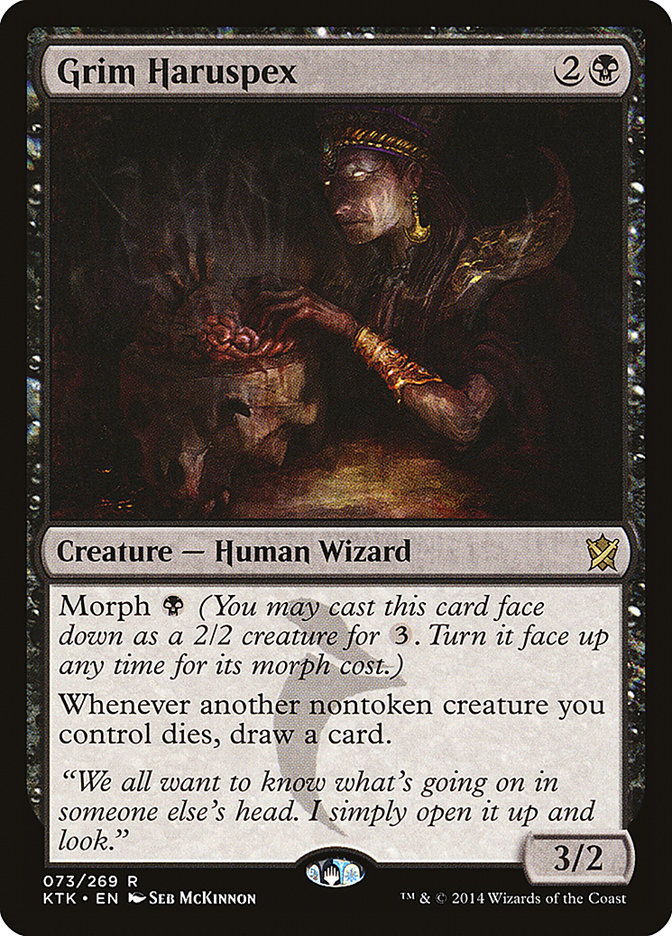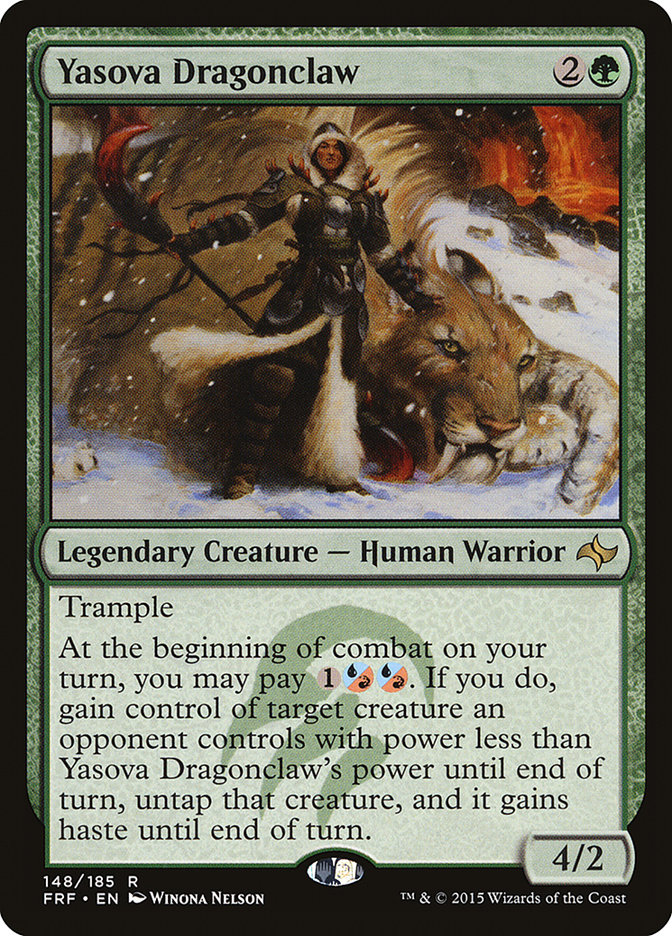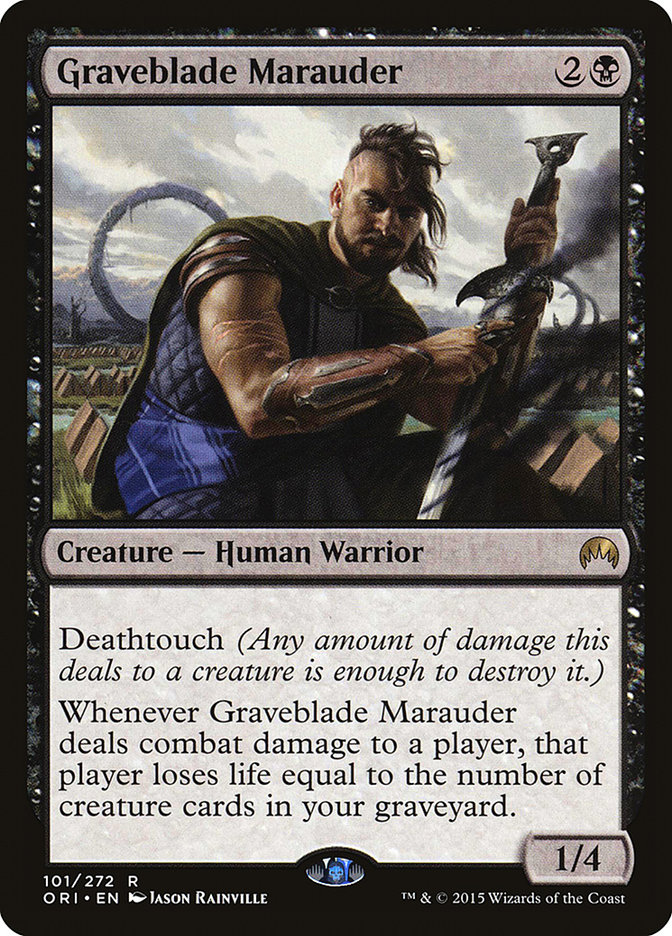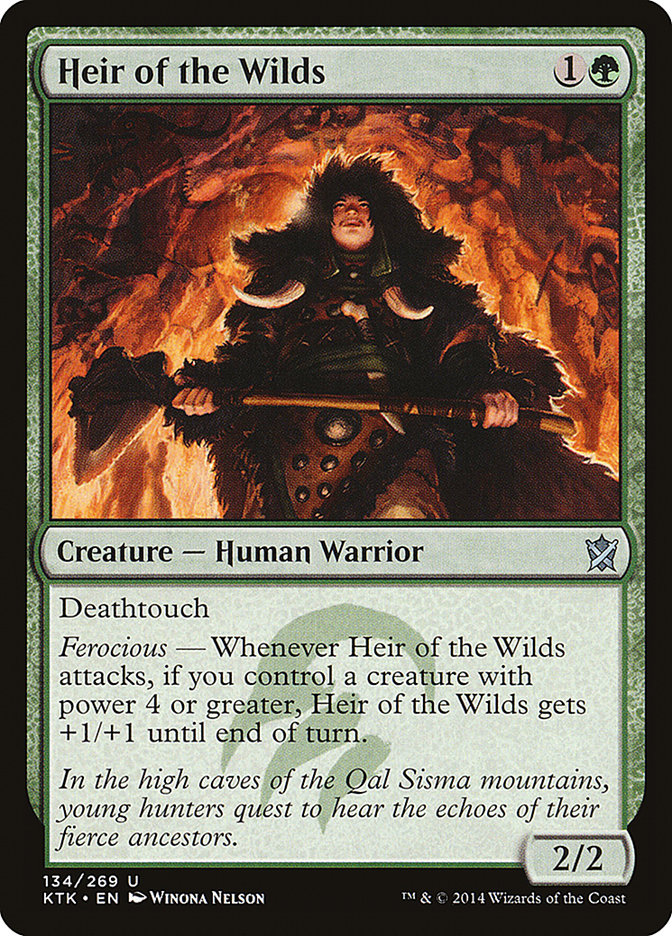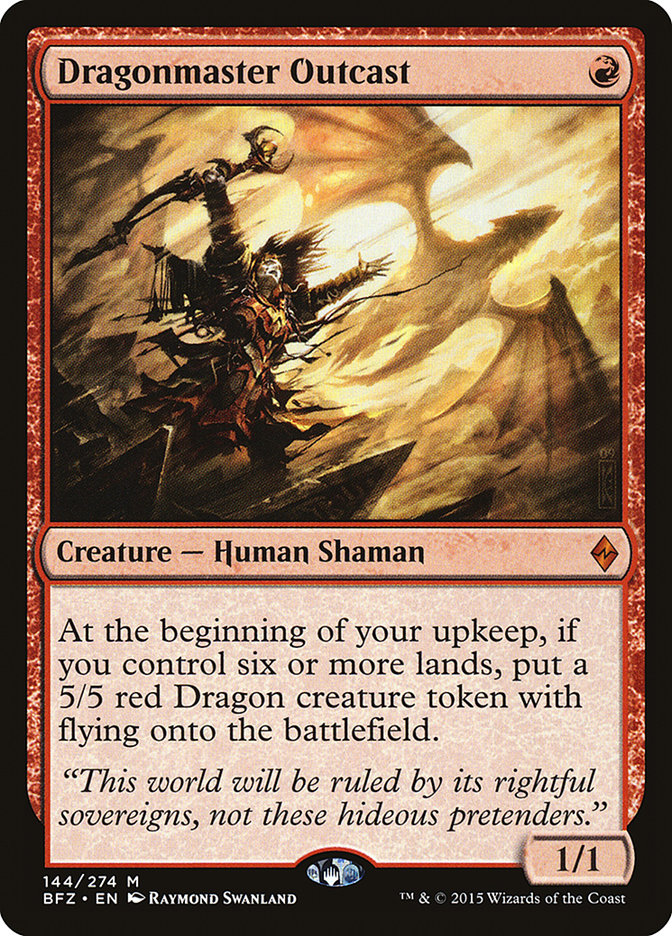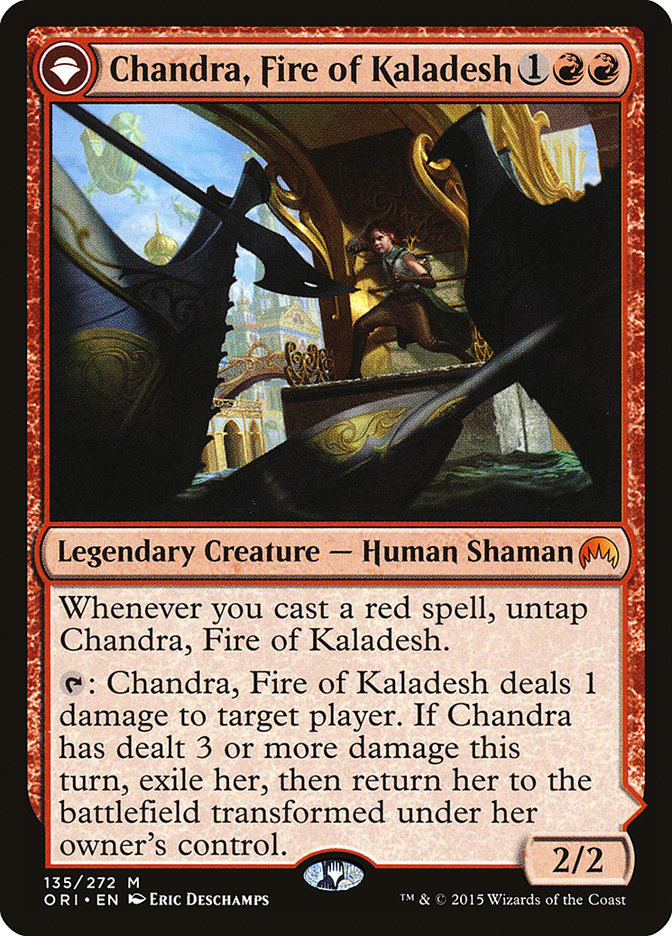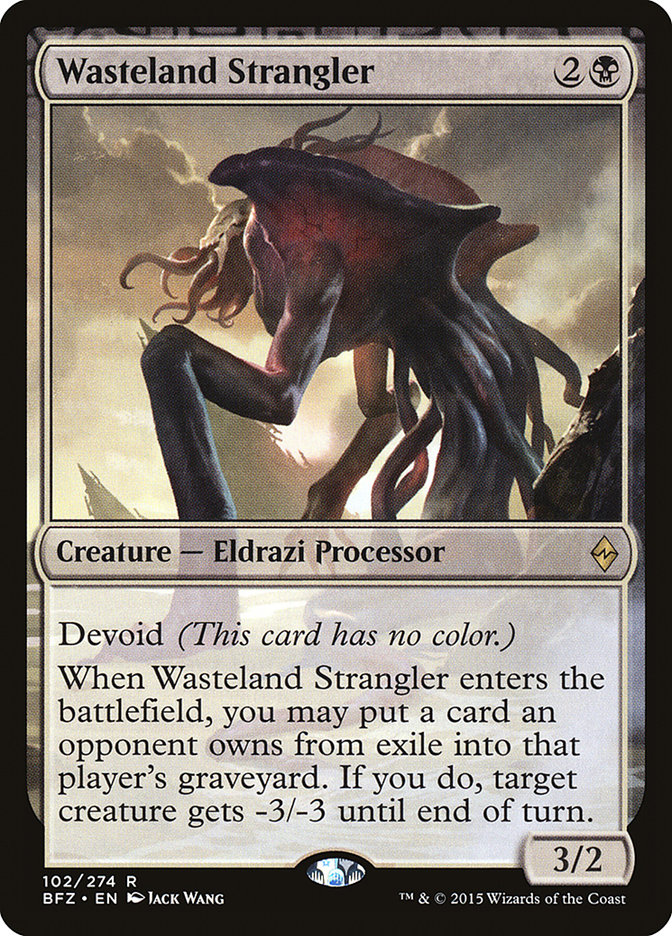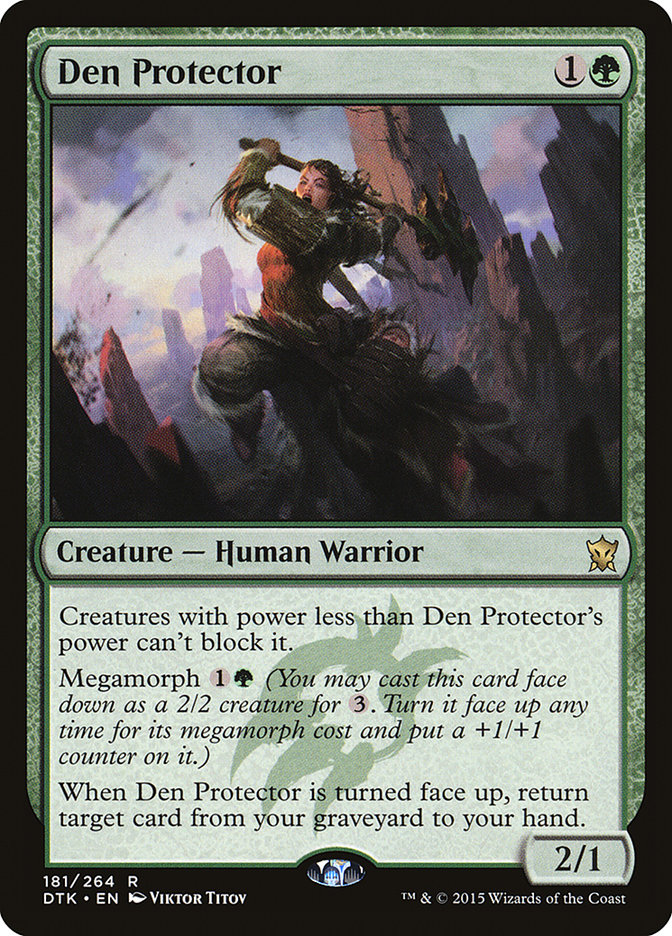I confess. I have something of an obsession with making Alesha, Who Smiles at Death become a thing. The card is so powerful on the face and breaks so many
rules that I want to play her in every deck that supports the colours. Heck, I have been known to stretch manabases just to cast her in Abzan decks so that
we can play her.
Sorry, not sorry.
With everyone raving about how “free” it is to add a third colour to so-called enemy-coloured two-colour decks, I figure that some form of Jund deck has to
be possible in Standard. With the likes of Patrick Chapin starting to say that Siege Rhino is poorly positioned in the current metagame (no seriously, he
said exactly that), there’s no longer a pressure to combine white with black and green cards. Since the red splash is basically “free” (or at least very
cheap), why not Zoidberg slide Alesha into the old Abzan Aggro shell?
Three’s Company
One of the first things I wanted to do when I saw Nissa, Vastwood Seer and Liliana, Heretical Healer was to play them both in a Collected Company shell. If
Abzan Aggro were to cut Siege Rhino, that would leave a whole bunch of powerful creatures that are hits on a Company without compromising power level.
Rather than just throw a decklist out there, I wanted to break down the various options in terms of auto-includes, potential additions, and probable traps.
Collected Company decks are quite often plug-and-play Mr. Potato Head decks that let you use the best options for your metagame.
Oh come on now, you knew this was going to be at the top of the list. Not only is Alesha a solid beater at 3/2 with first strike for three mana, but we can
easily build our deck around her recursion ability and Collected Company hits. To maximize our hits on both sides, we want a mix of creatures with
haste, creatures that impact the battlefield as soon as they arrive, and creatures that are resilient. Alesha is going to play the recursion role in the
deck, allowing us to bring the best creatures after point removal and sweepers.
These are givens. Both cards are exceedingly strong and are the cards that sent me down this path in the first place. One of the sweet interactions in the
deck is the ability to bring back Nissa tapped and attacking, then cracking a fetch as the seventh land to flip Nissa during combat if something goes
wrong. That’s a little harder to pull off with Liliana, but what she lacks in insta-flip potential she makes up for in additional reanimation.
Killer Kitty has been pushed out of most aggro lists by the ubiquitous Hangarback Walker, but in this list it shines. Of course we don’t want to be hitting
a Hangardad with Collected Company or bringing one back with Alesha, but Deathdealer works well with both cards without giving up too much lategame power.
Regeneration is less valuable in a world of exiling removal, but there are only so many of those spells, and we have plenty of targets for them.
We’d be crazy to neglect my pick for the most versatile one-drop in Standard. With an end step Collected Company, we can avoid the trap of leaving him
exposed as a 1/1 for a full turn, and even bringing him back with Alesha will likely leave enough mana open to level him up once in combat. If he gets
blocked by something too big to deal with, we don’t have to activate, we can save the mana to pump our Deathdealer perhaps. Plus, look at that
facial hair. Marvel at it and its wondrous placement. Only a gentleman of the highest moral fibre wears their facial hair in such a fashion.
Probably the best card seeing no play right now, all thanks to a certain insect-riding nuisance. Much like Mantis Rider saw little play until Stormbreath
Dragon rotated, Drana’s time may have to wait until fewer people are on the Rider. With Todd Anderson now espousing a move away from it though, I am
willing to try Drana out if for no other reason than the gamble will pay off huge if we’re right. Her upside is enormous, and bringing her back
with Alesha is about the best thing we can do.
As we’re looking to abuse enter the battlefield effects with Alesha, having an on-demand sacrifice outlet will be very useful. When that outlet also hits really hard, it’s even better. The side effect of dodging exile-based removal is also a significant boon. We’ll see in the next section that some
of our potential additions make the Husk an even better option as we’re able to go wide, which of course also goes well with Drana. I do love me some
synergy!
Possible Niche Additions
One of my favourite things about Collected Company is the ability to plug and play your creatures as required by the metagame in your area. Some of these
additions are only good in certain situations, others are a tier below our must-haves but still good enough to make the deck.
If we end up playing a bunch of Warriors (and a fair few of our options fit that bill), this seems like a great addition. The creatures we sacrifice will
easily come back with Alesha’s ability (or a flipped Liliana for that matter), and sometimes that extra reach will help us get through a stabilized board.
Gaining a bunch of life seems reasonable too.
Our creatures are going to die whether we like it or not. Catacomb Sifter ensures we get at least some value from that inevitable removal, but also brings
along a body that lets us flip Liliana at will and gives us a little extra mana to activate an ability or two or chump block. Or hey, maybe it
just sits around and gets bigger from some Drana attacks. Whatever works. These “draft roadmap” uncommons always seem to be right on the edge of
playability, but the Sifter feels a small step ahead of the others. With that said, the body is unimpressive and doesn’t really do anything in combat,
unlike most of our other options.
Sometimes we want to draw cards. I like drawing cards. The biggest problem here though is the whole 1/1 thing. It’s a last-resort hit on a Collected
Company, and we almost never want to bring it back with Alesha. But we get to draw a card! Ugh, if only we had Phyrexian Ranger in Standard right now. If
your metagame is fast, the early blocking body combines well with the card-drawing, but otherwise we should leave the Visionary on the bench.
Plenty of reasons to play one or both of these, not least of which is the ability to remove annoying threats like Silumgar, the Drifting Death and
Dragonlord Ojutai. Hitting one from Collected Company along with a Liliana gives us an instant flip while also whittling down the opposing battlefield.
Merciless Executioner also has the bonus of being a Warrior if we end up playing Blood-Chin Fanatic, and we can always sacrifice something else to the
enters the battlefield trigger if we need a three-power beatdown engine.
The drawback here is that we cannot recur either creature with Alesha. One of the most important lessons we can learn as brewers is to avoid being a slave
to our theme, so it’s not necessarily a bad thing to include a couple of creatures that Alesha can’t bring back. However, if we’re going to do that, I
would rather have a much more powerful reason to do it.
The Haruspex has seen a lot of play in Rally/Aristocrat strategies, but the three-power body is something that often gets overlooked. Our creatures are going to die (like we said earlier), and we do like drawing cards, but being able to hit for three for only one more mana makes our
Grim friend a lot more appealing than Elvish Visionary. There’s also the fact that we’ll often draw more than one card unless they want to spend removal on
it first.
Again though, that three-power body is staying in the graveyard once it goes there. The Haruspex ability is more powerful in a vacuum than the
Exectioner/Marauder ability, so I’d be more willing to include this in most cases. If, on the other hand, you find yourself in a metagame that needs the
extra removal effects, go the other way.
One of these days, someone is going to find a way to make a Temur deck work. When that finally happens, Yasova is going to go nuts. The effect is
incredibly powerful, and a 4/2 for three is exactly what we need in terms of a powerful finisher. Her triggered ability will allow us to steal Mantis
Riders, Jaces, Deathmist Raptors, Den Protectors, Wingmate Rocs, and multiple other powerful threats, but the real kicker is that Drana combines so well
with Yasova. With a mere one counter we can steal Siege Rhino, Anafenza, and Tasigur. Not a bad assortment!
There are not many hasty threats in Standard right now, but the Berserker is one of the better ones. The haste allows us to ensure we pick the right spot
to get the renown active, which then makes every removal spell a painful proposition for the opponent. The two questions I have are around mana cost and
whether or not she belongs in the maindeck.
Red is very much a splash colour in the deck, so requiring RR could be a stretch. Sure we can hit her off Collected Company, but I hate relying on that as
our best way to get her onto the battlefield. The mana may well be good enough to manage that drawback, but we’ll need testing to confirm. Most of the
top-tier decks right now are spell-heavy, so there’s a good argument for playing a Berserker or two in the maindeck. However, we need to determine whether
the impact is enough for the stretching of our manabase that we might well need.
This one is super-iffy. Two bodies, one of which flies, for three mana is relatively efficient. Unlike Catacomb Sifter though, we get either a 2/1 with no
other abilities or a 1/3 with marginal upside. Is a 1/1 flier worth that trade? In general, I would say not, but it’s possible your metagame calls for more
flying offense (or defense, for that matter). I think the Engineer is slightly ahead of Gearcrafter here as a 1/3 is a more useful body in general, but
both of them are skating the edge of playability as it is.
Are we filling up our graveyard fast enough to play the Marauder? We don’t really have explicit ways to do so, but we also don’t need a tremendous number
of creatures in the graveyard to make the Marauder worthwhile. For three mana I would be happy if we can regularly deal an additional three, and anything
above that is a bonus. We can also sacrifice a bunch of things to Nantuko Husk to make the trigger deal a bunch more if needed. We also can’t overlook the
deathtouch and large behind on the Marauder, letting us hang back a little if we need to. The drawback here is that without a graveyard, Marauder is a
terrible offensive option. Opponents can easily just ignore a 1/4 and wait for you to draw something else before killing it if they choose to do so, making
it a lousy first threat. Great after having your battlefield swept, though!
Really, he’s just fine. We’re low on natural ferocious enablers, meaning we will often only be swinging for two with deathtouch. That can be okay in some
situations, but in general just doesn’t do enough. If there are a lot of decks that want to gum up the ground, Heir can be a tool to help you break
through. Otherwise…meh.
Traps
The temptation to include powerful cards in our colours that meet the mana cost restrictions of what we’re trying to do is relatively high. However, some
of those creatures are just plain bad in the deck and should be left behind. Be strong, my friends.
On the face of it, we might find the prospect of bringing back a lategame Outcast to be very powerful. The issue is that Alesha brings it back
tapped and attacking, which is likely to lead to very swift death. It’s possible that we can cast him out of the sideboard, especially
against decks that have limited removal, but I’m fairly sure we will have better options available to us.
Sure, she’s another planeswalker we can hit with Collected Company and bring back with Alesha. However, red is definitely our splash colour in this deck,
and we will find it quite hard to reliably flip Chandra. If we can’t get her in for an unblocked attack, it’s basically impossible.
I love this card almost as much as Craig Wescoe seems to love it, but we have next to no exile effects here. As much as I would love a Flametongue Kavu in
our deck, we’re not likely to be set up for it. There are far better options for a 3/2, and although there may well be a devoid-based B/R deck splashing
green for Collected Company, that’s not what we’re doing here.
This might be a little controversial, but I really don’t like Den Protector in Collected Company decks. I’m not trying to say it’s a bad card because
clearly it’s one of the best creatures in Standard, but hitting it on a Collected Company feels terrible. We’re either putting an underwhelming
2/1 onto the battlefield or shipping it to the bottom and hoping we hit a fetchland at some point later on. We have the additional feel-bad scenario here
of not being able to recur it face-down with Alesha.
Three power for two mana with upside is normally a good return for a deck that wants to get a lot of damage in during the early turns. In this deck though,
the upside is basically blank text, leaving us with a vanilla 3/2. Not something I am terribly interested in, and even less so when I need untapped red on
turn 2 to make the best use of it. Sure I could play it on turn 3 and give itself haste, but then I am not playing one of my powerful three-drops.
Filling Out The List
I actually really like Kolaghan’s Command in this deck. We’re almost always going to be using Raise Dead as one mode, but the flexibility on the other is
the real reason to play it. I’m generally not a fan of the card in Standard, but this is one place I can see value for it.
One card that can be pretty scary for us is Anafenza, the Foremost. I will be so glad when that card rotates; she invalidates so many cool ideas on her
own. We’ll want powerful removal like Murderous Cut to deal with her, though Cut itself is slightly counter-productive. My kingdom for a Dreadbore!
Collected Company decks rarely run more than eight spells, with four of those clearly being Company itself. I would never want to drop below 24 creatures,
for example. With no one-mana accelerant to run (no, we are not playing Honored Hierarch, ever), our hits are always going to be impactful. We
don’t want to dilute that too much. I could see a case for Roast, Complete Disregard, and even Ruinous Path in some combination as our removal suite.
One option for a sideboard plan is to cut the Collected Company/Alesha engine and just run more value spells to clear the way for our efficient threats. On
this plan we can look at Den Protector and Kolaghan’s Command to keep the value flowing and increase the removal level.
This is definitely something I would take to an FNM when I want to play something different. Collected Company has almost fallen off the planet in recent
weeks, so we will take a few people by surprise. At the very least we will be able to have some fun with the reanimation on Alesha.
As always, thanks for stopping by. Until next time…Brew On!

